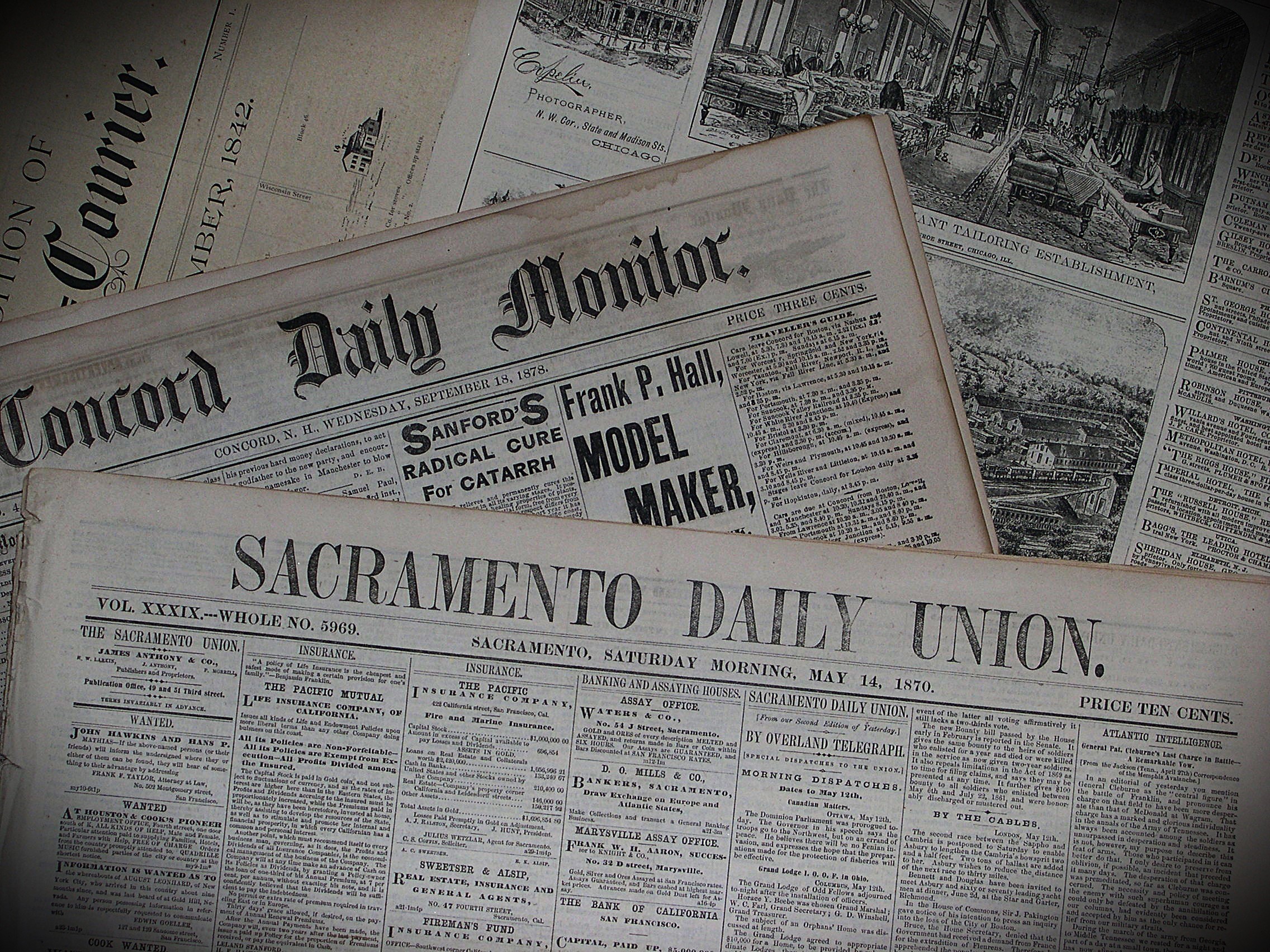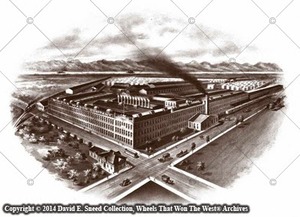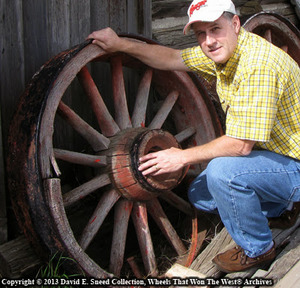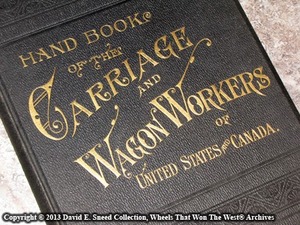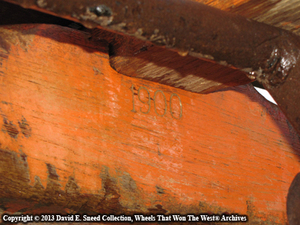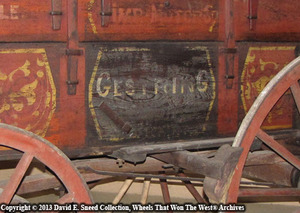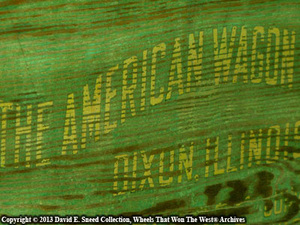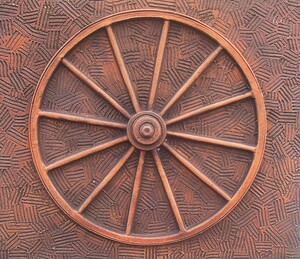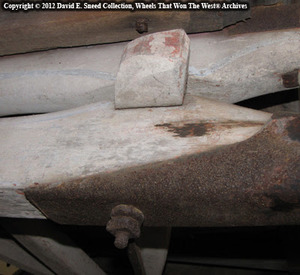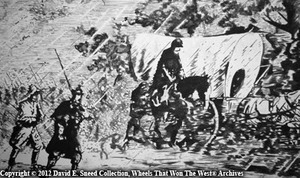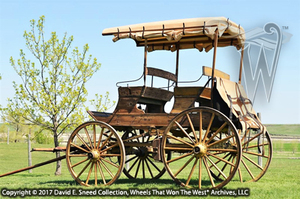When considering the purchase of a period wagon, stage, or some other antique horse-drawn vehicle, ask yourself, "What do I want to do with this piece?" The answer to that question will not only help you determine how much to invest but the details can help define your needs and expectations with the vehicle. For instance, do you want...
- Something to restore for resale and the satisfaction of time well spent? Pieces that show significant deterioration can often be procured for lower prices. Sweat equity in a set of wheels can offer greater appreciation for a vehicle while also helping save history at a lower cost.
- A wood-wheeled vehicle for casual gatherings or a scenic and static outdoor display? In these cases, originality and authenticity may not be as important as the general 'look' of the vehicle itself. Reproductions may even be an option, making this a category with the potential to be more affordable and accessible. Local event centers and venue settings can often benefit from pieces in this category.
- A good "user" wagon for parades, ranch use, or recreational drives? Prices tend to be a little higher for well-maintained antique vehicles that have been deemed sound and solid. These may have varying amounts of originality and might even be restored using newer parts or elements from multiple wagons. While not always considered a collector vehicle, these pieces can still attract attention with their look of yesterday.
- A set of wheels that will sufficiently compete in chuck wagon, sheep camp, or other recognized events? Prices on these western icons can jump considerably. Attributes like originality, condition, brand, provenance, features, and timeframe of manufacture can all contribute to the desirability and value of these western wheels.
- A wagon or stage from a particular timeframe? Similar to the point above, traits like the condition, brand, features, and design style often have an impact on cost of wagons in this category. Those with high wheels, brakes, and drop tongues, as well as rack bed designs, Mountain wagons, and even true freighters can have price differences over some with stiff tongues, low wheels, and no brakes. It all comes down to the total vehicle composition and era represented. Nineteenth century pieces, especially those from the primary days of western expansion, can also draw greater attention.
- A premium condition survivor with significant original paint? Investment grade pieces with notable provenance, features, and documented attention to historic details are some of the easiest ones to recognize and can often attract attention from serious bidders.
Each of these considerations will likely lead you to a different vehicle choice and, consequently, a different price tag. With that as a preface, I'm regularly asked, "What's my wagon worth?" A lot of times, that question comes with no images or competent way to assess the vehicle. Simply asking what an antique wagon is worth is like asking what an old car is worth. It's far too general of a question. For instance, that shell of an old four-door Packard that's been rusting away on a hillside cedar glade will have a much different value than the 1898 Egger-Lohner C.2 Phaeton (P1) discovered in an old warehouse in Austria a few years ago. That first Ferdinand Porsche-designed car had been overlooked and untouched for well over a century. What an amazing find! Now, it's the opening exhibit for the incredibly prestigious Porsche Museum in Stuttgart, Germany.
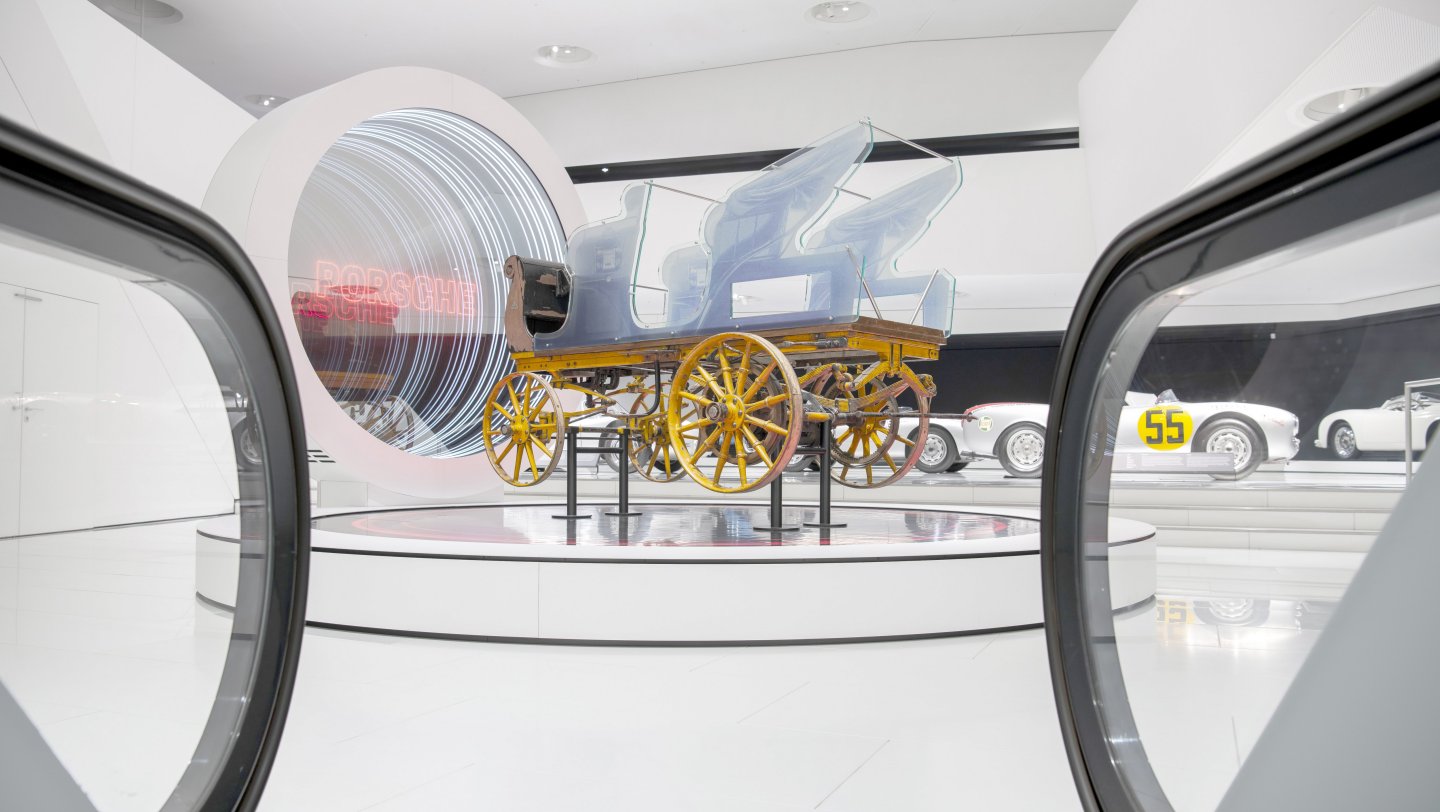
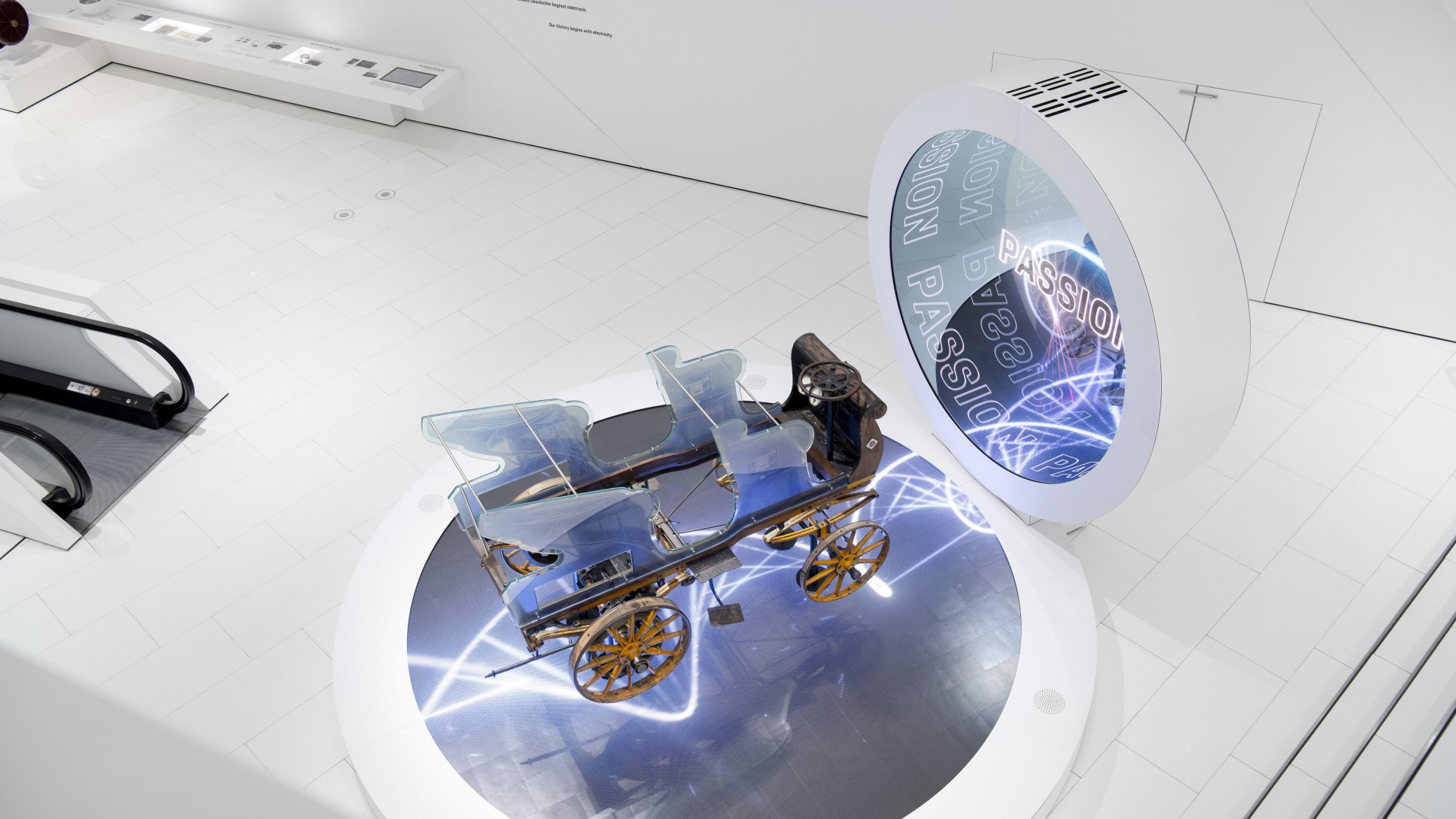
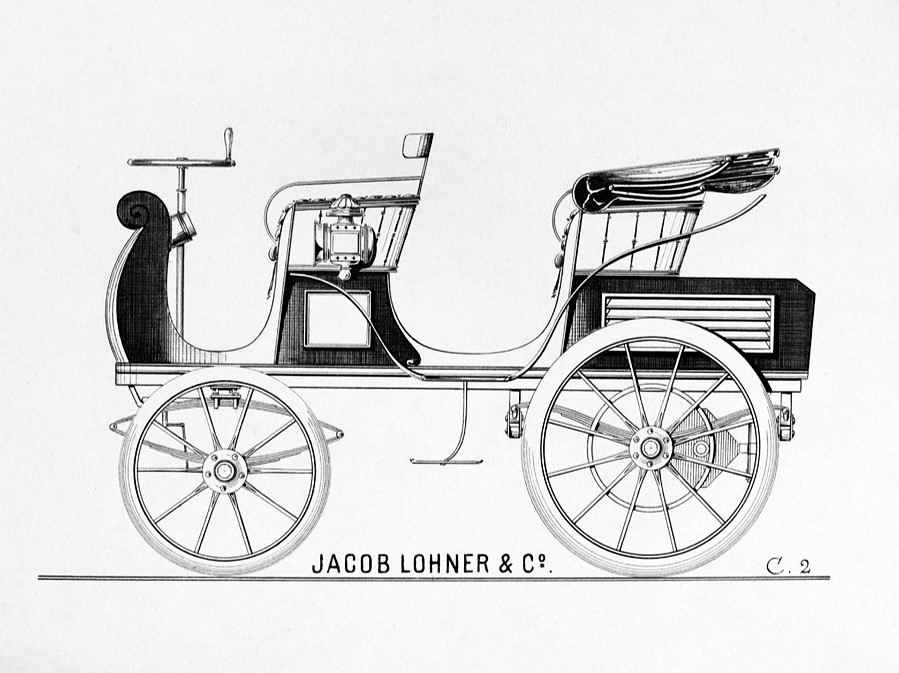
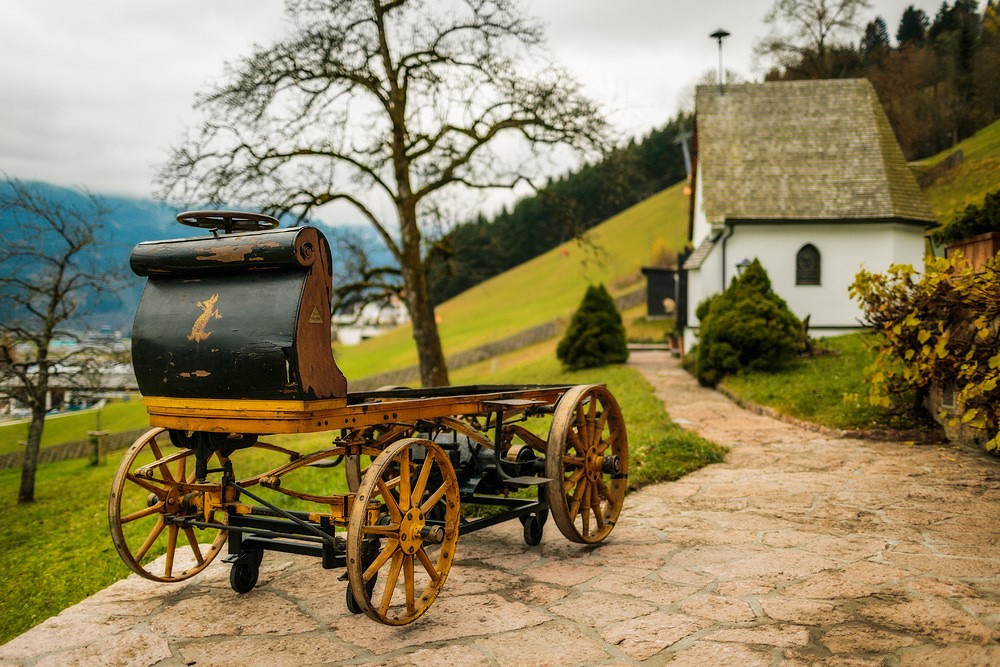
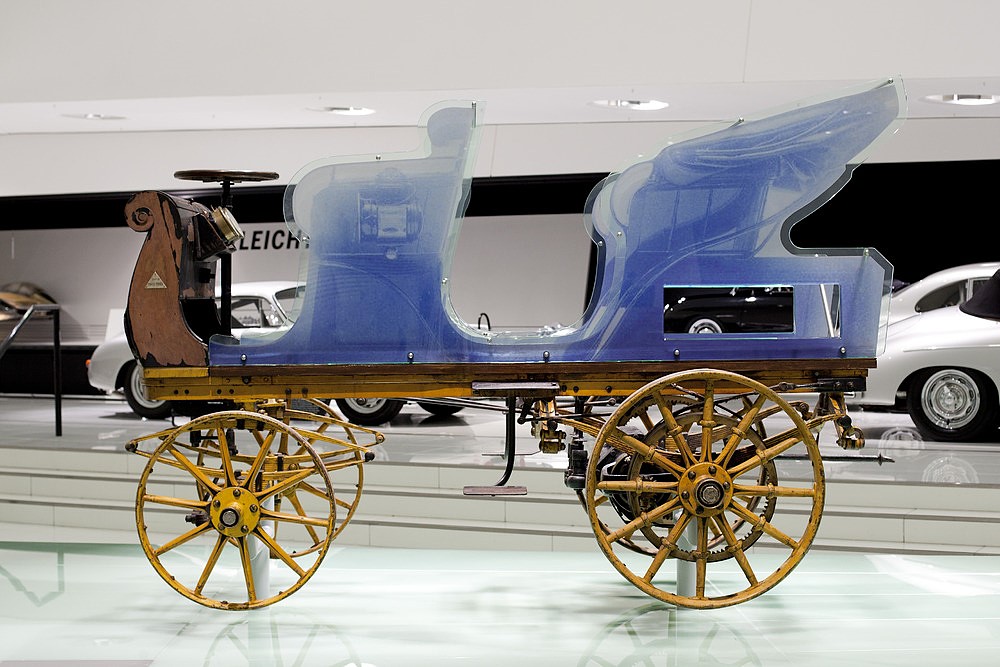
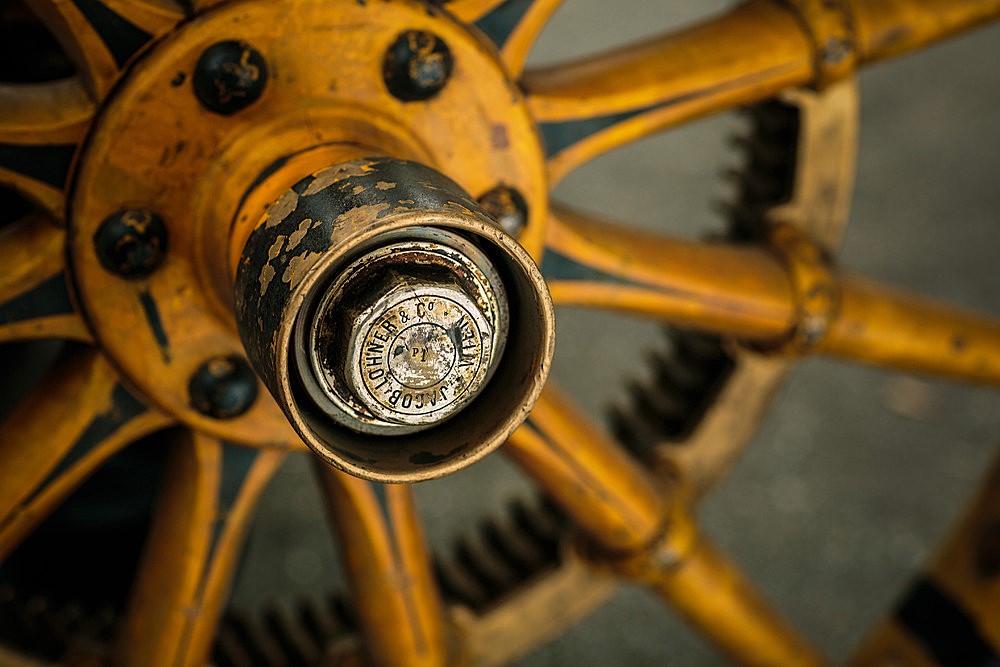
The 1898 wheel hub shown above looks surprisingly similar to an Archibald hub commonly seen on a number of horse-drawn vehicles in the U.S. For comparison, see the WW1 Escort wagon hub immediately below. All images above are Courtesy of the Porsche Museum, Stuttgart, Germany.
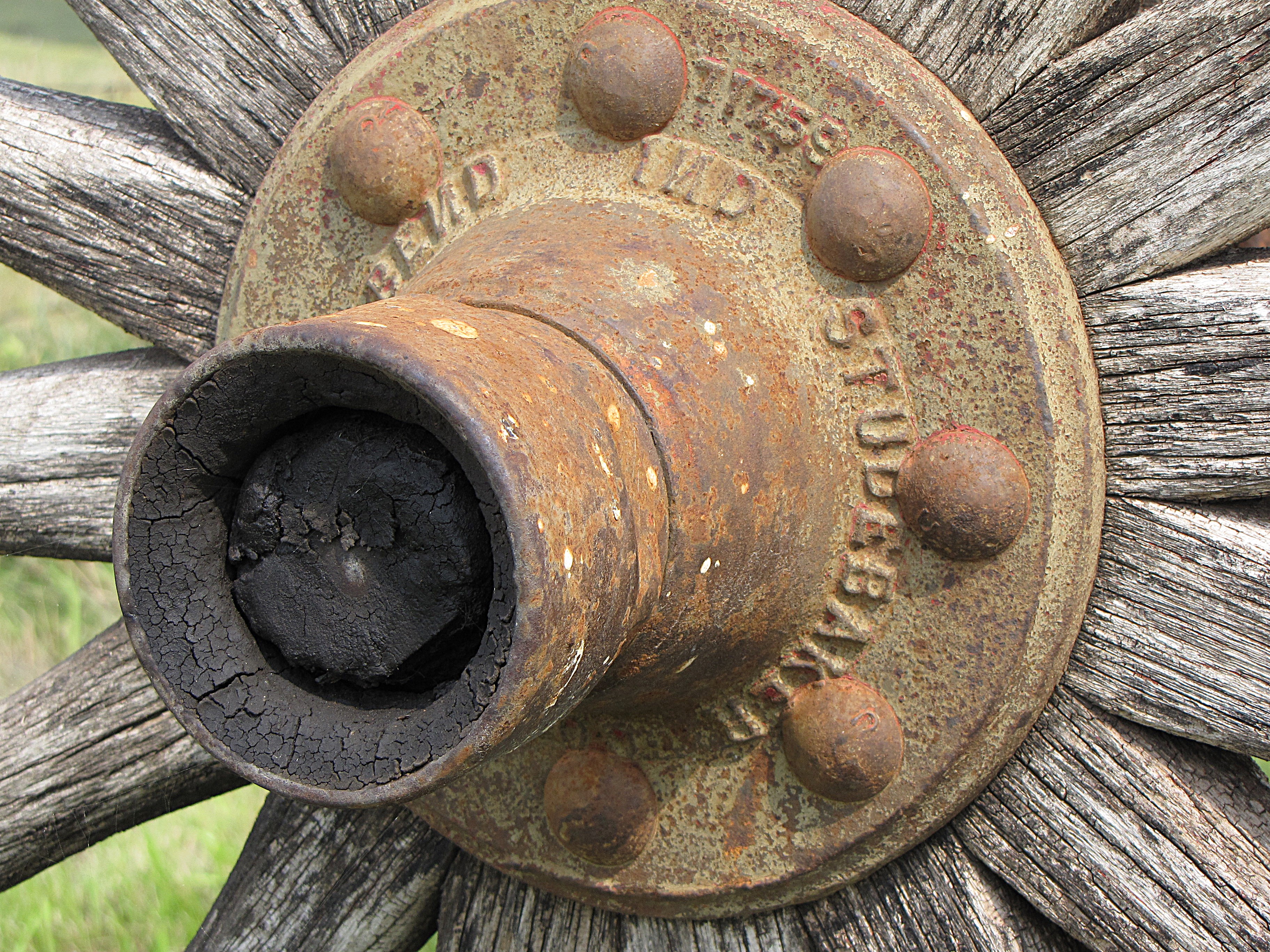
Archibald hub shown on a Studebaker Escort wagon running gear. Image Copyright © David E. Sneed. All Rights Reserved.
Similarly, a '63 split-window Corvette or '57 two-door Nomad station wagon will typically turn more heads than the mostly original '76 Ford Pinto found in an old salvage yard. Simply put, just as with old cars and trucks, there are many factors that affect the value of antique horse-drawn wagons. The condition of these vehicles is only one part of the review process but it's the one that many folks tend to fixate on. In my early searches for good vehicles, I too had an obsession that focused almost exclusively on condition. As time has progressed, my appreciation for the history of America's first transportation industry has also evolved. Today, while the areas of condition and soundness remain important, I tend to be more absorbed with the lost icons of the West; those brands with connections to a time when America's westward expansion was full of danger, drama, and determination. For me, condition can easily take a backseat to the documented story and historic rarity of a piece.
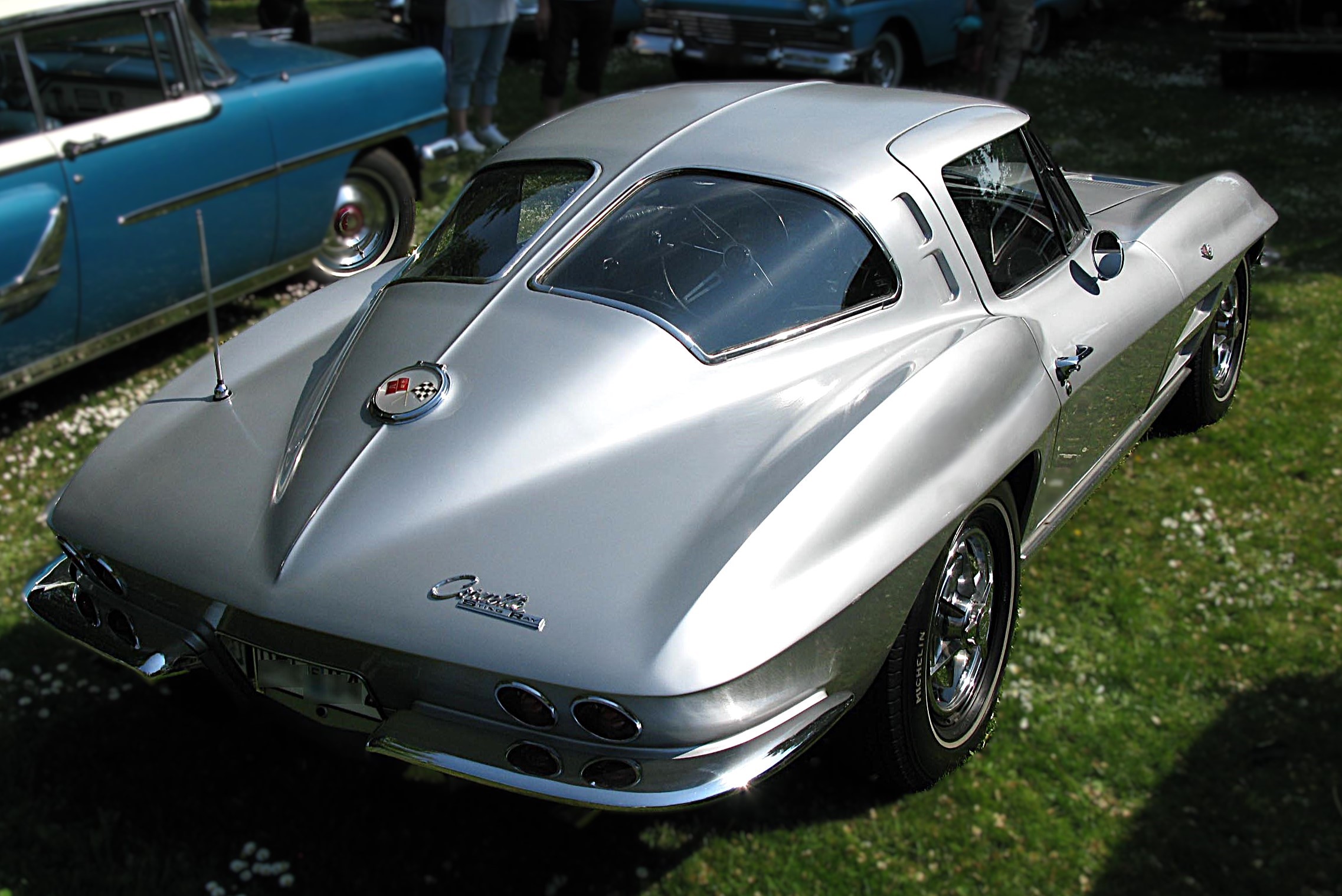
1963 split window Corvette image courtesy of Wiki Commons,
Ultimately, a lot's changed since I first started collecting antique wagons and stages. One of the most noticeable areas of change has been the continuous increase in costs for the rarest survivors. In the 1970s, a premium condition, name brand antique wagon with a world of original paint might run between $500 to $1,000. By the early 1990s, it would have probably taken 5K to acquire a similar piece. The same, name-brand wagon today will likely run at least three to four times that amount - if not more! That's a significant increase in just a few decades. We can see even higher increases over the last century for original condition stagecoaches. During the Great Depression, these parts of the past had almost no value. Today, they're highly sought-after and priced to that level. From the back of the rear wheels to the tip of the tongue, these are basic observations I've made and should NOT be considered as financial advice or guarantees of returns on investments. Nonetheless, based on my own experience and research, I've seen auction results with dramatic returns for the right pieces with good provenance, features, and presentation.
Ultimately, as I've shared in other writings and speaking engagements, the cost of something is not necessarily what you initially pay for it. The actual cost is what you pay minus what you receive when you part with the item. For collectors of wood-wheeled history, in some cases, that could mean that ownership might end up costing very little or even nothing. Investments of all types come with risk. But then again, life itself is fraught with uncertainty. At the end of the day, buy what you like.That way, there's always a reason to appreciate what you have, whatever the sale price.
Knowing what you expect from a vehicle or why you want it; in other words, the vision you have for it, will have a direct impact on the overall appreciation factor. Here's what I mean. I once bought an 1860s-era spoke tenoning machine. It was pretty rough, and my wife asked me what I was going to do with it. I said, "You know that empty little nook in the living room? What do you think about us using that space as a small tribute to the tools of early wagon makers. I'm thinking this thing will make an interesting table/display." With a little foresight, effort, some varnished oak lumber for a lower shelf, and a small piece of tempered glass, we were able to create a one-of-a-kind piece of furniture that retains the originality of the design while reinforcing the Wheels That Won The West® story. Looking past the condition of the piece allowed us to rescue a rare part of the past that continually evokes comments while complementing our entire collection. In short, there's a theme and connection that contributes to our focus. It's the same with period vehicles.

Research and continuous study of legendary makers can help all of us locate and preserve examples from the original masters of the craft. It's an arduous process of time, documentation, and patience but one that often uncovers overlooked gems. By the way, support documentation and vehicle evaluations are just some of the services we offer to other collectors as well.
Ultimately, whether the vehicle you're considering is for a museum, collection, business, activity, or general use, there should be a process for the purchase evaluation. If any part of that assessment involves western heritage, the evaluation should go deeper than condition. After all, most of these old warriors have lost more than paint and parts; the rich heritage can also be completely overlooked. Sadly, and too often, that's the real Cost of History.
By the way, if you're reading this and haven't signed up for notifications that alert you to every time we post a blog or article, please go to our website (www.wheelsthatwonthewest.com) and click the SIGN UP button at the top right of the page.
Psalm 20:7
